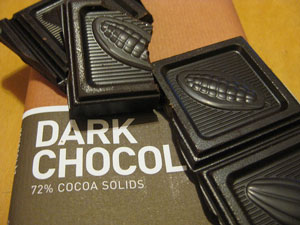When you emptied an entire bag of potato chips, you may ask yourself: what makes chips addictive? Scientists talk about hedonic hyperphagia or hedonic hunger. In plain English, it is the pleasure of eating, even when you are not hungry. There are certain foods that seduce you to overeat, and one of these are chips. Chocolate or candy can be other high-hedonic rating foods.
Erlangen experiments
A group of researchers from the Erlangen University in Germany set out to get to the bottom of this addiction eating. 17 healthy subjects with a body mass index of between 19 and 27 were recruited for eating experiments. They got either high calorie chips or low calorie zucchini. The chips created a marked stimulation on a functional MRI scan where the nucleus accumbens was lighting up. When they consumed zucchini no such stimulation could be documented. The researchers had done similar experiments with the same foods on rats. They too had functional MRI scans and the tests showed similar stimulation after the test animals consumed chips, but not after zucchini.
Nucleus accumbens, the addiction center for food
Professor Andreas Hess and his team in Erlangen say that the nucleus accumbens is the addiction center for food. They also did experiments with fat to carbohydrate composition to find the most addictive mixture. There is a certain fat to carbohydrate ratio that triggers food addiction. What surprised the Erlangen researchers was that both in rats and humans the optimal addiction potential was identical.
- They found that rats preferred 35% of fat and 45% of carbohydrates in their chips. With humans there is the other factor: on top of the fat/carb mixture we like to taste some salt and spices, because this also will stimulate our appetite. The food industry has figured this out long time ago. This knowledge from tasting experiments is built into processed food.
- The Erlangen researchers also found that in obese people the nucleus accumbens was lighting up more intensely the higher the BMI was. That means that obese people are more food-addicted!
Triggering the nucleus accumbens
- Professor Hess postulates that the 35% fat to 45% carb mix in potato chips is ideal for the body. It can mobilize quick energy from carbs, but also have storable energy from fat at the same time. It is this mix, which stimulates the addiction center in the nucleus accumbens.
- In a study from Bethesda, Maryland researchers found an overlap between food addiction and drug addiction. The common pathways in both is the release of dopamine in the nucleus accumbens. This dopamine release makes us feel good, and as a result, we want to experience it again.
- In this study patients with bulimia nervosa were examined. They found that overconsumption of sugar-laden foods had very similar effects as drugs in drug-addicted patients. It is the release of dopamine, glutamate and the opioid system that are involved in both. The nucleus accumbens is also receiving stimulation in both situations.
What can be done about food addiction?
This publication noted that people who are food addicted eat higher amounts of fat and carbohydrates. With this mix the feel-good nucleus accumbens produces most dopamine, which is the driving force behind the addiction.
- If you cut out sugar, you find it easier to control your eating portions. But you also must cut out processed food, as this is where a lot of hidden sugar is coming from.
- Cut down on your fat consumption. Even if you reduce it from 35% to 10% or 15%, this is a huge step forward. It reduces your calorie intake significantly, but also reduces the stimulation of your appetite center.
- Eat lots of vegetables, salads and some fruit. Be careful with some fruit like grapes, bananas, mangos, papayas and dates. They are all higher in sugars. If you cannot entirely avoid those, use portion control, so you are not overeating on them.
Portion control
Besides changing the food quality, you can reduce the portions of food you are eating. Instead of mindlessly emptying a whole bag of chips, you could get a small bowl and fill part of the bag of chips into it. Remove the bag into a cupboard that is difficult to reach. If you are sitting and watching TV, you could eat one chip at a time, but only during commercial breaks. This way your chip eating becomes more conscious and more controlled, and you set a limit. In time you may find that you can replace the chips with a lower calorie food like slices of apples, celery sticks or carrot sticks.
Conclusion
Researchers found that chips were addictive in rats and in humans. Functional MRI scans of brains in rats and humans showed that potato chip eating stimulated the nucleus accumbens. It was lighting up in both species when the test subjects consumed potato chips. Surprisingly, it did not matter, whether these were test animals or humans! A review of several research papers showed a similarity between food addiction and drug addiction. It is dopamine and other brain transmitters that stimulate the nucleus accumbens, which is the addiction center. One of the keys, professor Hess from Erlangen University in Germany found, is the fat/carb mix. When the potato chips contained 35% fat and 45% carbs, this stimulated the nucleus accumbens.
Changing your eating habits
Knowing all of this helps us to be able to change our eating habits. To avoid the pitfalls of food addiction, cut out sugar and starchy foods, and remove processed foods from your diet. Also reduce some of the fat to 10% or 15% fat in your total diet. Eat lots of vegetables and fruit low in sugar. In addition you should also consider with portion control to avoid mindless munching. Before you know it you can shed the pounds that you may have accumulated before. You will be able to reduce your BMI to 21 to 23. Many people have done it before you.








